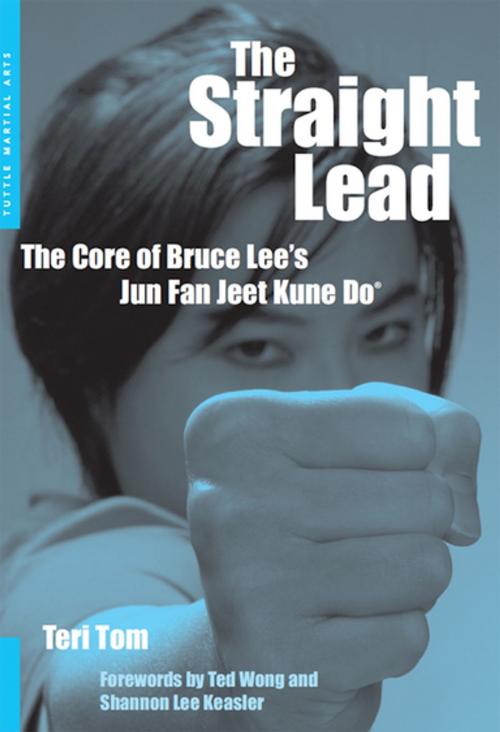Straight Lead
The Core of Bruce Lee's Jun Fan Jeet Kune Do
Nonfiction, Sports, Boxing, Individual Sports, Training, Martial Arts & Self Defence| Author: | Teri Tom | ISBN: | 9781462907366 |
| Publisher: | Tuttle Publishing | Publication: | May 15, 2012 |
| Imprint: | Tuttle Publishing | Language: | English |
| Author: | Teri Tom |
| ISBN: | 9781462907366 |
| Publisher: | Tuttle Publishing |
| Publication: | May 15, 2012 |
| Imprint: | Tuttle Publishing |
| Language: | English |
"The straight punch is the core of Jeet Kune Do."—Bruce Lee
The straight lead was a key element in Bruce Lee's development of his own personal style. It was designed to be uncomplicated, economical, and brutally effective but is not as simple as it might seem. Bruce Lee once described it the most difficult move in the Jeet Kune Do arsenal.
Lee developed JKD as a response to the shortcomings he found in traditional martial arts, but it also includes elements of Western combat systems that he found effective. It incorporates contributions ranging from Jack Dempsey's approach to boxing to the fencing style of Aldo Nadi.
In The Straight Lead: The Core of Bruce Lee's Jun Fan Jeet Kune Do, author Teri Tom describes the development of the straight punch in Western martial arts and describes Bruce Lee's refinement of the technique. It also offers a thorough instruction in the complexity and power of the move—showing martial artists of any discipline how to incorporate this devastating attack into their repertoire.
With forewords by Shannon Lee Keasler and Ted Wong, chapters include:
- A Brief History of Straight Punching
- Evolution of Jeet Kune Do's Straight Lead
- The Stance
- Mechanics of the Straight Lead
- Footwork
- Why the Straight Lead?
- Application
- Speed
- Variations of the Straight Punch
- What Jun Fan Jeet Kune Do is Not
- Go to the Source
- An Interview with Ted Wong
"The straight punch is the core of Jeet Kune Do."—Bruce Lee
The straight lead was a key element in Bruce Lee's development of his own personal style. It was designed to be uncomplicated, economical, and brutally effective but is not as simple as it might seem. Bruce Lee once described it the most difficult move in the Jeet Kune Do arsenal.
Lee developed JKD as a response to the shortcomings he found in traditional martial arts, but it also includes elements of Western combat systems that he found effective. It incorporates contributions ranging from Jack Dempsey's approach to boxing to the fencing style of Aldo Nadi.
In The Straight Lead: The Core of Bruce Lee's Jun Fan Jeet Kune Do, author Teri Tom describes the development of the straight punch in Western martial arts and describes Bruce Lee's refinement of the technique. It also offers a thorough instruction in the complexity and power of the move—showing martial artists of any discipline how to incorporate this devastating attack into their repertoire.
With forewords by Shannon Lee Keasler and Ted Wong, chapters include:
- A Brief History of Straight Punching
- Evolution of Jeet Kune Do's Straight Lead
- The Stance
- Mechanics of the Straight Lead
- Footwork
- Why the Straight Lead?
- Application
- Speed
- Variations of the Straight Punch
- What Jun Fan Jeet Kune Do is Not
- Go to the Source
- An Interview with Ted Wong















